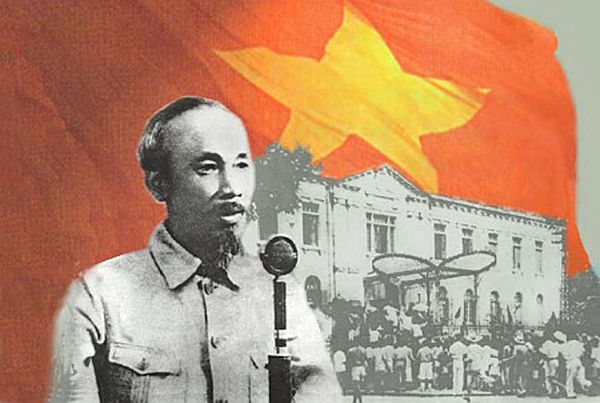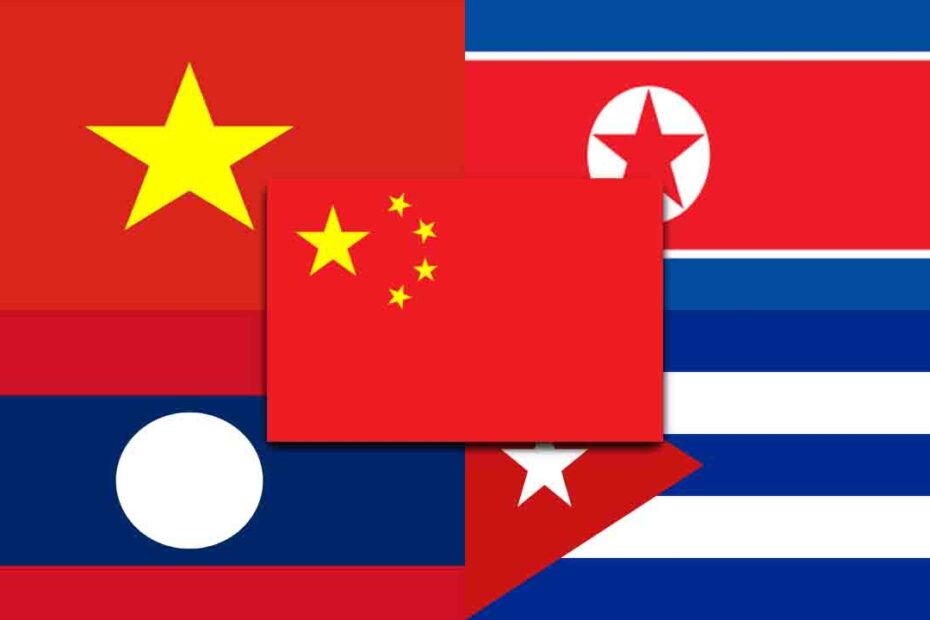With the collapse of the Soviet Union in 1991, the Communist system and ideology around the world suffered a massive blow. However, not all Communist Countries ceased to exist after the fall of the USSR.
As of March 2023, several countries around the world still identify themselves as communist.
To what extent these so-called “communist countries” did preserve the communist system and ideology is debatable.
What are the last Communist Countries around the world and how relevant they are today?
The definition of a communist country.
Before presenting the full list of the last communist countries in the World it is important to underline a critical ideological aspect.
How do you define a communist nation? Not even the last communist countries on Earth don’t call themselves communist, but Popular republics or Socialists.
First of all, in a communist nation, there is a single-party system that controls all economic and social activities inside the nation. Usually, the Party rules in the name of the “proletariat” and aims to establish a dictatorship of the proletariat.
In a communist society, private property is completely abolished and banned. The entire economic activity is strictly controlled and planned by the State. The ultimate goal of the Communist planned economy is to create the resources/means to advance to an egalitarian society.
I. Democratic People’s Republic of Korea (DPRK) – North Korea

After the Korean War, which ended in a stalemate, the Northern part of the Korean Peninsula remained firmly under the control of the Democratic People’s Republic of Korea (DPRK), led by Kim Il-Sung.
To consolidate his regime, Kim Il-Sung initially adopted and implemented a Soviet Style version of Communism.
The Workers’ Party of North Korea was in charge of all aspects of society.
Until 1974, the economy of North Korea, which was structured as a command economy, actually performed better than South Korea.
After 1974, an era of stagnation began.
To further solidify its control, Kim Il-Sung introduced his ideology called Juche.
Some claim that Juche is a form of socialism, while others argue that it is a new ideology in its own right, different that communism.
Kim Il-Sung’s successors, further claimed that Juche is a distinct ideology, separated from Marxism-Leninism.
Unlike Communism, which is an internationalist ideology, Juche strongly emphasizes the role of nationalism, sovereignty, and the cult of the Supreme Leader.
The abandoning of Marxism-Leninism and the introduction of Juche was a total disaster for the North Korean economy. Juche emphasizes the need of securing the finances for the army so that the national sovereignty of the country is protected. That is why even today, when the economy of North Korea is so less developed, nearly 80% of its insignificant GDP goes to military-related sectors.
The work on building the first Atomic bomb and the expansion of the Nuclear program also contributed to the neglecting of other vital economical sectors.
As a result today North Korea has one of the smallest economies in the world.
North Korea’s GDP is 57 times smaller than the one of its neighbor, South Korea.
Kim Jong-Un the current leader of North Korea, continues the hardline stance of his predecessors and keeps all elements of the autocratic regime.
II. People’s Republic of China

After the surrender of Japan in 1945 the war between a communist faction led by Mao Zedong and nationalists led by Chiang Kai-shek resumed.
The battle for total domination of China lasted from 1946 until October 1949.
1949 the remnants of the Nationalist faction and Chiang Kai-shek took refuge on the island that is known today as Taiwan, this moment was the victory of the communist regime in China.
In October of the same year, Mao Zedong proclaims the People’s Republic of China.
This is the beginning of the grand communist experiment in China.
Initially only a Soviet-style communism, Mao Zedong will later intervene and radically modified it so it can be better adapted to the realities of the Chinese nation.
After the death of Stalin and the rise of Nikita Khrushchev to power, Mao Zedong will go even further and claimed that Moscow even betrayed communism, while also presenting his version of communism as the true one.
This marks the beginning of what we know today as the Sino-Soviet Schism.
Yep, during the Cold War, there was no such thing as a united Communist world against Capitalism.
Even the communist world was divided between the many forms of communism: Soviet or Chinese.
With the death of Mao Zedong, the hardliners of the Communist Party were marginalized by the more “liberal” faction of the Party, led by Deng Xia Ping.
Deng Xiao Ping, opened the Chinese Economy to massive foreign investments, facilitating its rapid economic growth.
Economic revival didn’t also translate into more political freedom and Deng Xiaoping took steps to make sure that the supremacy of the Chinese Communist Party was never questioned.
With the crushing of the student protests in Tiananmen Square, the Chinese Communist Party leadership was secured.
For a while, it appeared that the supremacy of the “liberal and pro-business” faction inside the CCP was granted, but with the rise to power of Xi Jinping, it seems that the hardliners, close to Maoism are back for revenge.
III. Socialist Republic of Vietnam

After the end of the Vietnam war in 1975, the country was reunified under the leadership of the Vietnamese Communist Party.
Vietnamese communism is based on Marxist-Leninist principles and the political thoughts of Ho Chi Minh.
The aim of the Communist Party of Vietnam like other movements is to coordinate and plan the economy so that the country can first reach the socialist and then the full communism level.
Any opposition to the regime is not tolerated, the media is heavily censored, and public meetings are restricted.
Vietnam’s economy followed the same path as the one of Communist China.
After realizing that the central/planned economy was not efficient, the Vietnamese allowed and encouraged private initiative and investments.
However important, critical sectors of the economy are still under the control of the state.
Despite its authoritarian political system, Vietnam has made significant progress in terms of economic development and poverty reduction in recent years.
Major concerns about the level of corruption, human rights abuses, and lack of political freedoms in the country remain.
IV. Lao People’s Democratic Republic(Laos)

During WWII, Laos was occupied by Japanese troops. After the defeat of the Japanese in 1945, the country became for a short period of time independent. Between 1945-1953 the country was again under French occupation.
In 1953, Laos became again a free nation as a constitutional monarchy, but this political regime won’t last for long.
The Communist resistance which was generously supplied with weapons and aid by the Soviets and Chinese, started a long and brutal civil war, with the clear goal of obtaining total power in Laos.
The Laotian Civil War would last between 1959-1975. The war officially ended with the establishment of the Lao People’s Democratic Republic.
With the political victory secured, the Lao People’s Revolutionary Party implemented the same economic policies as in any other communist country.
A planned economy system was introduced and key sectors of the economy were nationalized.
After 1986, the Lao communist leaders realized that the planned economy was not effective, and decided to implement some reforms, thus allowing some private initiatives.
Being a totalitarian state, all aspects of society are heavily monitored and guided. Needless to say, any signs of opposition are immediately dealt with.
Despite some promising signs of economic growth in recent years, the Economy of Laos is still one of the poorest and least developed in the World.
V. Republic of Cuba

In 1959, with the victory of the Cuban Revolution led by Fidel Castro and the deposition of Fulgencio Batista, Cuba officially becomes the first communist state in the Western Hemisphere.
Under the leadership of Fidel Castro, the Cuban Government implemented numerous policies aimed at reducing inequality, improving education and healthcare, and promoting social welfare.
To finance these social policies, the government nationalized many industries and resources, including land, and established a planned economy that was heavily regulated and controlled by the state.
During the Cold War, Cuba was an important ally of the Soviet Union in the Western Hemisphere.
As a result, it received significant economic and military aid from the Soviet bloc. This led to tensions with the United States, which imposed a trade embargo on Cuba in 1960 that is still in effect today.
Despite its achievements in areas like healthcare and education, Cuba has faced significant challenges under communist rule, including economic difficulties, political repression, and restrictions on individual freedoms.
After the withdrawal of Fidel Castro from politics in 2008, the country was led by his brother, Raul Castro.
Raul Castro implemented some minor economic(small private businesses were allowed) and social reforms, to stabilize the Cuban economy, but overall kept the socialist system intact.
After 2018, Manuael Diaz becomes the new President of Communist Cuba, thus the Castro era in Cuban politics officially ends.
It will be interesting to watch how the Cuban Communist experiment will continue after the end of the Castro era.
Conclusion
This concludes our list of the remaining communist countries in the world.
As you probably observed, with the notable exception of North Korea, most countries from this list choose to abandon the original hardline communist policies in favor of economic reforms.
The abandoning of Marxist economic policies didn’t also mean the end of the political supremacy of the Communist movements in the mentioned countries.
